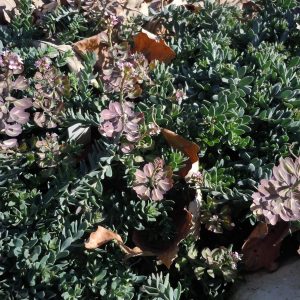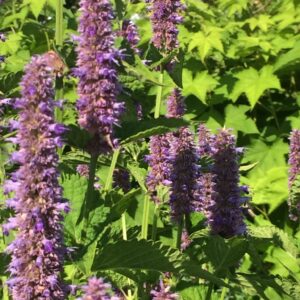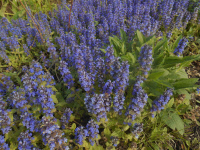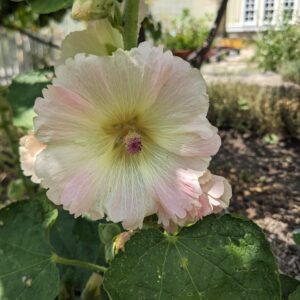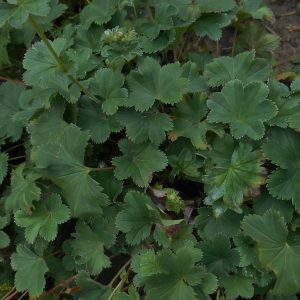Our Plants
Showing 17–24 of 616 results
-
Aethionema cordifolia Lebanon stonecress Persian candytuft Z 4-8
Short subshrub with lovely, tiny blue-green leaves on upright stems with terminal clusters of pale pink blooms in spring. Perfect for rock gardens and front of the border.
OUT OF STOCK
Aethionema cordifolia Lebanon stonecress, Persian candytuft Z 4-8
Short subshrub with lovely, tiny blue-green leaves on upright stems with terminal clusters of pale pink blooms in spring. Perfect for rock gardens and front of the border.Size: 6-8” x 12-15”
Care: sun in well-drained soil. Sheer back after blooming to keep compact and rebloom.
Native: Lebanon and possibly Caucasus on chalky summits.Collected before 1841. Foster: “…when planted in quantity does wonders for mass effect in the rock garden or alpine lawn.” January 1876 issue of The Garden called these “very attractive dwarf rock garden plants.” Aethionema from aitho meaning scorch and nema for filament.
-
Aethionema grandiflorum Persian stonecress Z 5-8
Bushy, low growing perennial with blue-green leaves and spikes of fragrant pink to lavender flowers, June-July
OUT OF STOCK
Bushy, low growing perennial with blue-green leaves and spikes of fragrant pink to lavender flowers, June-July
Size: 6-12” x 12-18”
Care: full sun in well-drained soil. Drought tolerant.
Native: Iran, Iraq, Caucasus, Turkey
Wildlife Value: attracts honeybees & other pollinators, Deer & Rabbit resistant.
Awards: Award of Garden Merit from the Royal Horticultural SocietyShort-lived perennial, but self-seeds where happy. Described in 1849 by Pierre Edmond Boissier and Rudolph Friedrich Hohenacker.
-
Agastache foeniculum Anise hyssop Z 4-8
Purplish-blue spikes from July to October. Fragrant foliage.
Purplish-blue spikes from July to October. Fragrant foliage.
Size: 2-3' x 12"
Care: Full sun in well-drained soil, heat and drought tolerant.
Native: North America, Wisconsin native.
Wildlife Value: Skipper butterflies and Rusty patched Bumble Bees love Anise hyssop’s nectar, deer resistant.The name Agastache is from Greek agan and stachys meaning much like an ear of wheat referring to the shape of the flower spike. Anise hyssop leaves were used by American Americans of the Missouri River region to make tea and as a sweetener in cooking. For Cheyenne it relieved chest pain due to coughing or to a dispirited heart. Listed as an aromatic herb in McMahon’s 1805 book.
-
Ajuga genevensis Geneva Bugle Z 4-9
True blue 6” spikes in spring and early summer
Ajuga genevensis Geneva Bugle Z 4-9
True blue 6” spikes in spring and early summer. Great groundcover.Size: 6” x 12”
Care: full sun to shade in well-drained to moist well-drained soil
Native: Europe
Wildlife Value: Tolerates foot traffic. Deer and rabbit resistant.William Robinson, father of the mixed perennial garden, called this “among the best.” (1933). In gardens before 1753.
-
Alcea rosea Hollyhock BIENNIAL
Early to late summer spikes of single platters - mixed colors. The classic cottage garden flower.
Early to late summer spikes of single platters – mixed colors. The classic cottage garden flower.
Size: 5-8' x 24"
Care: Sun in moist well-drained to well-drained soil. Drought tolerant
Native: West Asia
Wildlife Value: Butterfly plant, host for Painted Lady butterfliesCultivated in China for thousands of years where it symbolized the passing of time. They cooked the leaves for a vegetable and also ate the buds. Transported from Middle East to Europe by the Crusaders and introduced to England by the 1400’s. Culpepper, a 17th century English herbalist, claimed the plant could be used to cure ailments of the “belly, Stone, Reins, Kidneys, Bladder, Coughs, Shortness of Breath, Wheesing, … the King’s Evil,, Kernels, Chin-cough, Wounds, Bruises, Falls. . . (and) Sun-burning.” Both single and double forms grew in England by the time of Parkinson (1629). Parkinson said they came “in many and sundry colours.” John Winthrop Jr. introduced the 1st hollyhock to the New World in the 1630’s.
-
Alcea rosea var. nigra Black hollyhock BIENNIAL Z 4-9
Early to late summer spikes of single jet-black/maroon platters.
Early to late summer spikes of single jet-black/maroon platters.
Size: 5-8’ x 24”
Care: sun in well-drained soil
Native: West Asia
Wildlife Value: Attracts bees, butterflies and birdsHollyhocks have been cultivated in China for thousands of years where it symbolized the passing of time. They cooked the leaves for a vegetable and also ate the buds. Transported from Middle East to Europe by the Crusaders and introduced to England by 1573. Grown in the Eichstätt Garden, the garden of Johann Konrad von Gemmingen, prince bishop of Eichstätt in Bavaria, c. 1600. Culpepper, a 17th century English herbalist, claimed the plant could be used to cure ailments of the “belly, Stone, Reins, Kidneys, Bladder, Coughs, Shortness of Breath, Wheesing, … the King’s Evil,, Kernels, Chin-cough, Wounds, Bruises, Falls. . . (and) Sun-burning.” Both single and double forms grew in England by the time of Parkinson (1629). Parkinson said they came “in many and sundry colours.” John Winthrop Jr. introduced the 1st hollyhock to the New World in the 1630’s.
In the 1880’s Mr. W. Charter of Saffron Walden in England cultivated frilly doubles, now known as ‘Charter’s Doubles.’
-
Alchemilla alpina Alpine lady’s mantle Z 3-9
From a low mound of palmate (shaped like an open hand) silvery-margined leaves with silver undersides emerge short frothy sprays of chartreuse-yellow flowers in early summer. Will rebloom if cut back flowers after bloom.
From a low mound of palmate (shaped like an open hand) silvery-margined leaves with silver undersides emerge short frothy sprays of chartreuse-yellow flowers in early summer. Will rebloom if cut back flowers after bloom.
Size: 6-8” x 8-12”
Care: sun to part shade in moist to moist well-drained soil
Native: Europe and southern Greenland
Wildlife Value: Deer and rabbit resistantThe species originally described by English botanist and gardener to Queen Mary, Leonard Plukenet (1641-1706).
-
Alchemilla erythropoda Dwarf lady’s mantle Z 3-7
A miniature Lady’s Mantle for edging borders or growing in the rock garden. Short sprays of chartreuse flowers appear over a dense mound of scalloped light-green leaves that catch and hold rain or dewdrops
OUT OF STOCK
A miniature Lady’s Mantle for edging borders or growing in the rock garden. Short sprays of chartreuse flowers appear over a dense mound of scalloped light-green leaves that catch and hold rain or dewdrops
Size: 6-10” x 9-12”
Care: Sun to shade in moist well-drained soil
Native: Eastern Europe
Awards: Royal Horticultural Society Award of MeritDescribed in Flora Kavkaza Flora Kavkaza in 1928.

